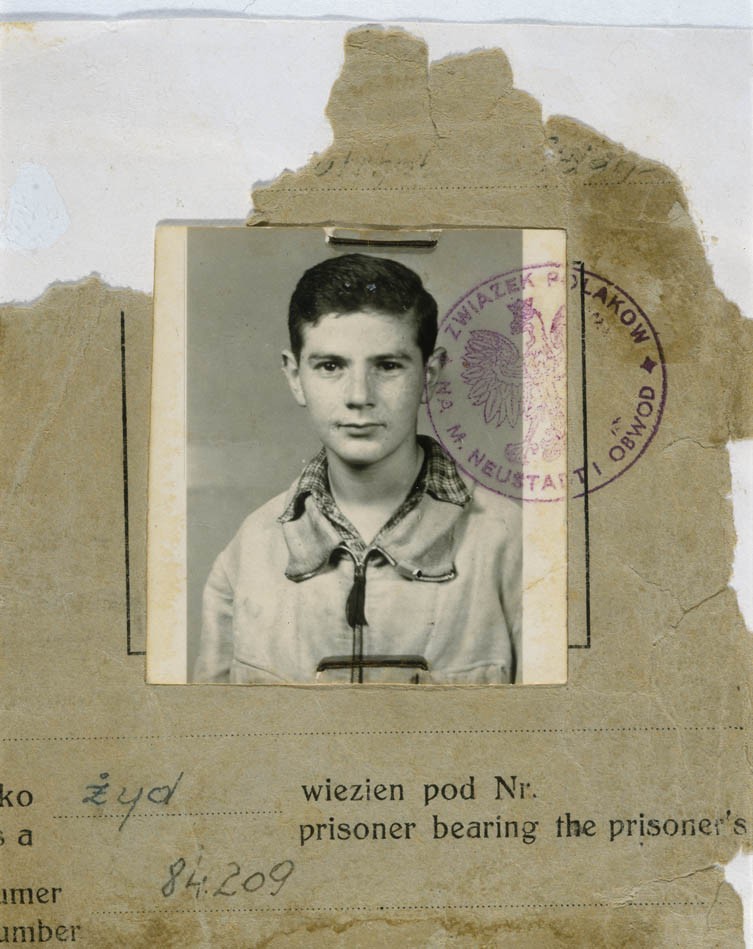
Chaim Kozienicki
The Jewish children of Lodz suffered unfolding harsh realities after the German invasion of Poland. Some of the children, among them Chaim Kozienicki, recorded their experiences in diaries. Their voices offer a view into the struggle of a community and its young to live in spite of the most difficult circumstances.
Excerpts
"The day of my Bar Mitzvah arrived. I put on the tefillin and I said the blessings. As a gift from my family I received half a loaf of bread. They wanted me to eat it right there and then, in their presence. I refused. I couldn't even imagine for how long they saved it from themselves in order to give it to me. They decided that I had to eat it, and I ate it. I couldn't look them in the eye because I ate their bread." —Chaim Kozienicki, age 13
“Nicely dressed peopled arrived. They spoke German. [One] asked, “Where can I buy cheese?” They suffered more than we did because we were already used to it.” —Chaim Kozienicki, age 13
"The selections went from house to house. We had no chance to avoid the deportation. We decided to take everything from our garden and eat it all; the last meal, the last supper. Mother cooked a huge pot of soup. We sat down and started to eat. All around our hut there was yelling and shooting and barking of the dogs. It was all mixed up but we were so invested in eating. We were in an ecstasy of eating. We ate bowl after bowl. When we were ready, we got up to go. Then Father said, 'They will take us anyway. Let them come and take us. We don't have to come out.' Apparently they looked through the two windows across the hut and did not see us inside, and they left. This was the miracle that happened to us.” —Chaim Kozienicki, age 14
Chaim's Story
Chaim Kozienicki was a student in a Jewish school in Lodz, and a passionate reader of books since second grade. He was eleven years old when the Germans invaded Poland and occupied Lodz. In March 1940, the Kozienicki family was forced into the Lodz ghetto. Members of the Hitlerjugend (Hitler Youth) attacked Chaim as the family moved to the ghetto, and marched him to forced labor.
The family moved into a wooden cabin located right next to the barbed-wire fence of the ghetto. The German guards amused themselves by random shooting. As a result of this, Chaim and his family could not go to the toilet located in the yard at night. At first, after moving into the ghetto, Chaim had a feeling of adventure. Chaim continued to attend school in the ghetto and completed the fifth grade. Chaim joined the Zionist youth movement. He was excited by the ideas and when no one was at home he practiced parade drills. Chaim's personal hero was Josef Trumpeldor.
In June 1942, on a Monday, the Kozienicki family celebrated Chaim's Bar Mitzvah. Before going to work, the four of them gathered and Chaim put on the tefillin (ritual objects) for the first time. In honor of the occasion, Chaim received half a loaf of bread and was asked to eat it in front of his parents and brother. Chaim understood the enormity of the sacrifice by his parents and brother, who denied themselves their small portions of bread and saved it to give it to him. Their parents insisted that he should eat the bread all at once, to know the feeling of being satiated. Chaim cried, and ate. For days he couldn't look anyone in the eye at home.
During the Gehsperre Aktion in the Lodz ghetto, the Kozienicki family stayed inside their hut and by strange luck they were forgotten by the searching Germans.
During the liquidation of the Lodz ghetto in August 1944, Chaim tried to avoid deportation, but he got sick and was taken to the hospital. His mother came to visit him every night after work. One day she didn't come—this was the day she and Chaim's father were deported to Auschwitz, where they were murdered on arrival.
On September 1, 1944, Chaim arrived in Auschwitz-Birkenau. He was later transferred to the Stutthoff concentration camp, then to Stolp, and back to Stutthoff. The Germans forced the prisoners on barks, small sailing ships which sailed on the Baltic Sea. Chaim was one of the few who survived. He was taken to Sweden to recuperate and soon after, he immigrated to Palestine. Chaim fought in the War of Independence and married a fellow Holocaust survivor. He lives near Tel Aviv. He has two children and is a grandfather. Chaim's older brother survived the war.
Critical Thinking Questions
- Why did the Nazis resort to a system of ghettos?
- Besides armed resistance, in what other ways did the Jews resist the Nazis while forced to live in the ghettos?
- How does the history of the Lodz ghetto and its inhabitants illustrate the systematic nature of the “Final Solution?”
- Investigate the experiences of children in the ghettos.

